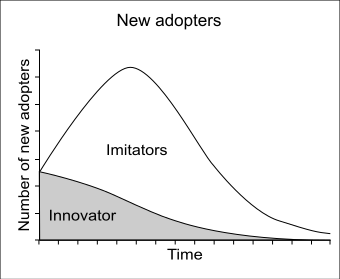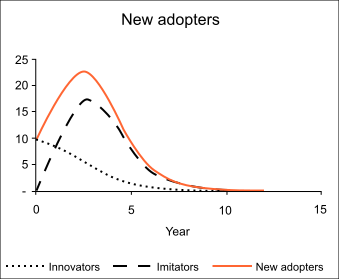Bass diffusion model
The classic Bass model of diffusion describes the effect of the introduction of innovative products, including innovation and imitation effects with the aim to assess without having to resort to complex modeling tools, the market situation with regard to the safety of investments in new technologies.
The basic model was presented by Frank M. Bass, professor at the University of Texas at Dallas, in 1961 and takes place partly in modified form a very wide application in marketing or marketing of industrial goods in particular in innovation management, especially for products that due to their novelty have no analogies with existing market solutions.
The modeling of the function for the estimation of the paragraph is done with the help of innovation and imitation coefficients respectively, which indicate the proportion of Erstkäufen due to the novelty of the product ( innovators ) and due to its dissemination ( imitators ), the former by the advertising and the last to be initiated by " word of mouth".
Is the innovation coefficient is smaller than the imitation coefficient (normal case), then corresponds to the shape of the sales curve of the life-cycle hypothesis, initially rising and then falling sales. In the other case, the curve is downward sloping from the beginning on:
As a formula
After the transformation, one obtains:
Since the parameters due to the novelty of the product are usually not known, they are estimated using regression analysis, the parameters occur as regressors:
With:
The missing data can be determined by solving the equation:










